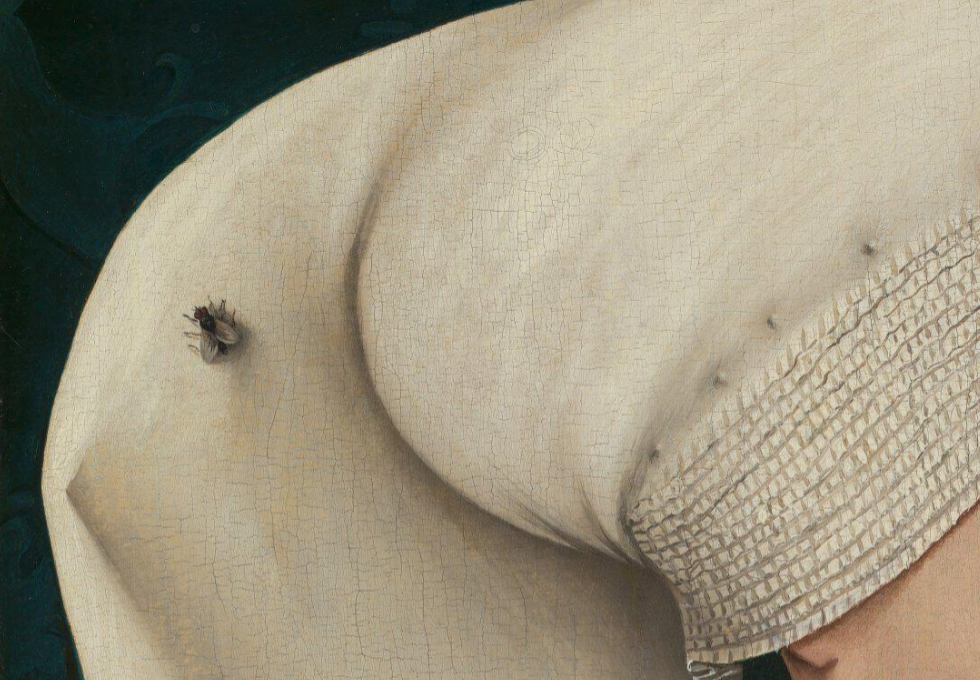The Enigmatic Elegance of Portrait of a Woman of the Hofer Family
Art has the power to capture not just an image but an entire story within a single frame. One such masterpiece is Portrait of a Woman of the Hofer Family, an exquisite painting that continues to intrigue art enthusiasts and historians alike. But what makes this portrait so captivating? Let’s dive into its fascinating details, history, and significance.
The Artist Behind the Masterpiece
The painting is attributed to Bartolomeo Veneto, an Italian Renaissance artist known for his skillful portraits that blend Venetian and Lombard influences. Active during the early 16th century, Bartolomeo’s works are distinguished by their rich detail, lifelike depictions, and intricate use of color. His style often reflects the influence of Giovanni Bellini and Albrecht Dürer, showcasing a refined mix of Northern European precision and Venetian warmth.
 |
| Bartolomeo Veneto, Artist |
Why Is This Portrait Famous?
This artwork stands out because of its remarkable attention to detail and the enigmatic expression of the sitter. The woman depicted is believed to be a member of the prestigious Hofer family, though her exact identity remains unknown. The elegance of her attire, the richness of the fabrics, and the subtle yet powerful gaze contribute to the portrait’s allure.
Moreover, the painting provides insight into 16th-century fashion and societal norms. The subject’s elaborate headdress and richly embroidered clothing indicate her high social status, offering viewers a glimpse into the grandeur of Renaissance-era aristocracy.
_School_-_Portrait_of_a_Woman_of_the_Hofer_Family_-_NG722_-_National_Gallery.jpg) |
| Portrait of a Woman of the Hofer Family |
The Astonishing Detail: Every Eyelash Counts
The Curious Detail: A Fly in the Portrait
One of the most intriguing aspects of this painting is the presence of a small fly resting on the woman’s clothing. In Renaissance art, insects like flies were often symbolic, carrying various meanings depending on the context. Some interpretations suggest that the fly represents the fleeting nature of life or mortality, serving as a subtle memento mori. Others believe it could symbolize deceit or imperfection, contrasting the sitter’s otherwise immaculate appearance. Whatever the meaning, this tiny detail adds an extra layer of mystery to the painting, making it even more compelling.
 |
| A Fly in the Portrait, Portrait of a Woman of the Hofer Family |
Who Were the Hofer Family?
The Hofer family was a prominent aristocratic lineage in Renaissance Europe, likely of Germanic origin. During the early 16th century, wealthy merchant families and noble houses often commissioned portraits to showcase their status and preserve their legacy. The inclusion of the family name in the title suggests that the subject belonged to this influential family, but specific records about the Hofer family’s history remain scarce.
While there is little concrete documentation regarding their prominence in the Venetian or Lombard regions, their wealth and status are evident in the luxurious attire and meticulous details in the portrait. This painting is a testament to the power and sophistication of noblewomen during the Renaissance, who played crucial roles in family alliances and cultural patronage.
Who Is the Woman in the Portrait?
Despite extensive research, the exact identity of the woman remains unknown. However, art historians speculate that she was a noblewoman from the Hofer family, possibly a wife or daughter of a powerful figure. Her composed expression, refined posture, and elaborate clothing suggest that she was of significant social standing.
Some theories propose that she could have been a young bride, as Renaissance portraits often symbolized marital alliances. The detailed embroidery and jewelry might indicate wealth inherited or brought into marriage as a dowry. Others believe she was a widow or a woman of influence within her family, given her dignified presentation.
Without official records, her identity remains a mystery, adding to the allure of the portrait. The lack of personal documentation further fuels speculation about her life, personality, and role in Renaissance society.
Fun Facts About the Painting
- The Mystery of the Woman’s Identity: While we know she belongs to the Hofer family, no concrete historical records confirm her name. This adds an air of mystery, sparking endless theories about her life and role in society.
- The Renaissance Fashion Statement: The intricate clothing details in the painting serve as a historical record of the luxurious attire worn by noblewomen during the time. The dress likely signifies her wealth and status, hinting at the opulence of Renaissance high society.
- A Blend of Artistic Influences: Bartolomeo Veneto’s works show a fusion of styles, influenced by both Venetian softness and Germanic precision, making this portrait a rare and fascinating piece of Renaissance art.
- The Use of Symbolism: Many Renaissance portraits incorporated hidden messages. Some art historians believe that details in the sitter’s jewelry and clothing may carry symbolic meanings related to marriage, virtue, or family legacy.
- The Hidden Fly: The tiny insect in the painting may represent mortality, imperfection, or deception, a common symbolic element in Renaissance artwork.
Why You Should See It in Person
While digital images can showcase the painting’s beauty, nothing compares to seeing it up close. The brushwork, the delicate rendering of textures, and the depth of color all come to life in a way that cannot be fully appreciated through a screen. If you ever find yourself in London, be sure to visit the National Gallery in London and take a moment to admire this mesmerizing portrait in person.
Address: Trafalgar Square, London, WC2N 5DN
Final Thoughts
Portrait of a Woman of the Hofer Family is more than just a painting—it’s a glimpse into history, fashion, and the artistry of the Renaissance. Whether you’re an art enthusiast, a history lover, or simply someone who enjoys unraveling the mysteries of the past, this portrait offers something for everyone.
Have you seen this painting at the National Gallery? What are your thoughts on it? Let me know in the comments below!
You may like
Read more:
💙 A Huguenot, on St. Bartholomew’s Day: Art, History, and Hidden Stories





